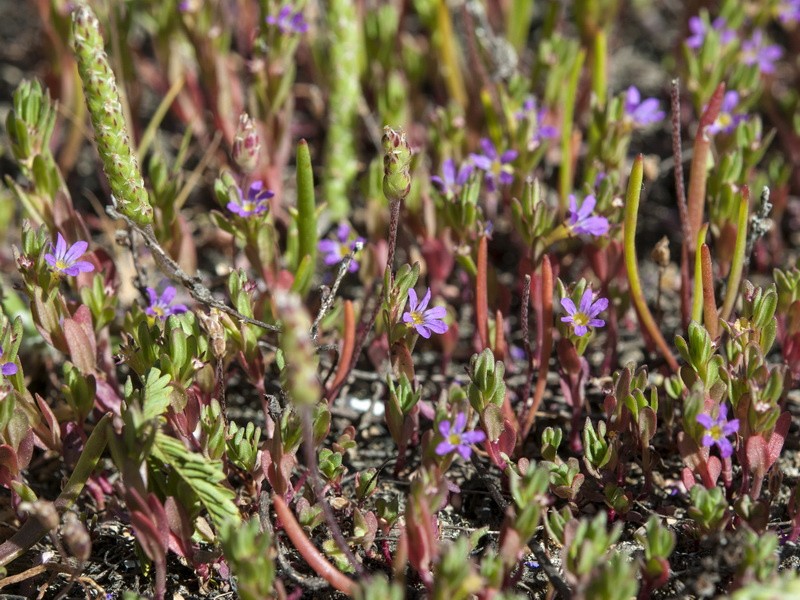After almost a century of hiding, grass-poly (Lythrum hyssopifolium) was recently discovered growing in a Norfolk farmland pond by Professor Carl Sayer of University College London.
Previously believed to have gone extinct, grass-poly is one of the rarest plants in the United Kingdom. The last confirmed sighting of this low-rising plant in the area was more than a hundred years ago.
An Astonishing Rediscovery
Professor Sayer, who is part of UCL's Pond Restoration Research Group, was surveying Heydon's pond when he noticed a plant he did not recognize. He sent a picture of the strange plant to Dr. Jo Parmenter, a local botanist, who immediately identified the plant as a grass-poly.
The species is believed to have reappeared after pond restoration works that started about a year ago disturbed the seeds submerged in the mud. The seeds were perfectly preserved in the mud where it was very dark, and no oxygen was available.
It remained buried in Heydon's muddy area until willows were pulled out to restore the pond. Since the soil was disturbed, the light was able to penetrate. This allowed the seeds to germinate.

The Mystery Plant
Grass-poly grows pinkish flowers and reaches up to 20 centimeters in height. It has very specialized ecological requirements, growing in water-retentive soil like around lakes and muddy open grounds. Its habitat can be characterized as flooded or wet in the winter but dries out in the spring.
Although it once thrived throughout Southern England, particularly around London, Cambridge, and Oxfordshire, it has been classified as an endangered species due to its dramatic decline. It can be found in a few isolated populations elsewhere in the U.K.
The species declined due to field drainage that limited the amount of wet arable land. The use of broad-spectrum herbicides also contributed to the diminishing number of grass-poly in the region.
Read also: Back from the Dead: 5 'Extinct' Animals That Were Not-So-Extinct When Rediscovered in 2019
Call for Conservation Efforts
Norfolk used to shelter thousands of ponds, but many have become "ghost ponds" due to neglect. In fact, the county has an estimated 23,000 ponds present. This is significantly more than in any other county in England.
These ponds, however, are continuously threatened by land reclamation, pollution, and invasive species. Many have also become overgrown with trees, while others have been filled to provide more agricultural land.
The presence of grass-poly in this "ghost pond" provided a new focus for the Norfolk Ponds Project, an initiative in partnership with the UCL Pond Restoration Research Group. It also gave birth to new hopes for the recovery of further species.
The Norfolk Ponds Project began in 2014 and was inspired by Richard Waddingham, a north Norfolk farmer and conservationist.
The revival of Norfolk ponds has been one of the most important projects as ponds provide clean freshwater environments and habitable areas that would benefit aquatic biodiversity.
Professor Sayer expressed his hopes to cultivate the population of grass-poly and expand it. Moreover, the discovery proves that plants believed to be extinct can be brought back to life through good conservation.
Check out more news and information on Extinct Species on Nature World News.
© 2025 NatureWorldNews.com All rights reserved. Do not reproduce without permission.





